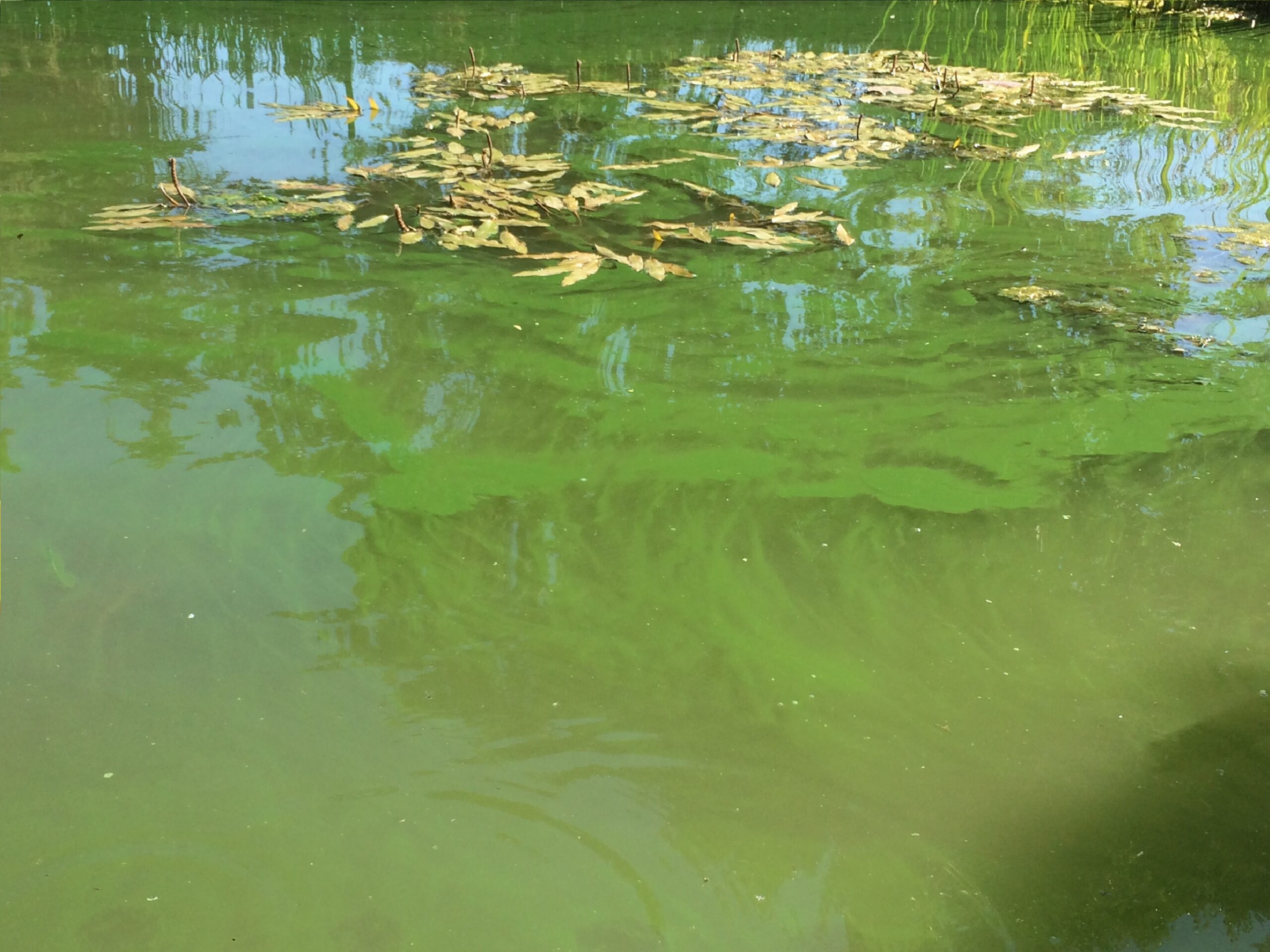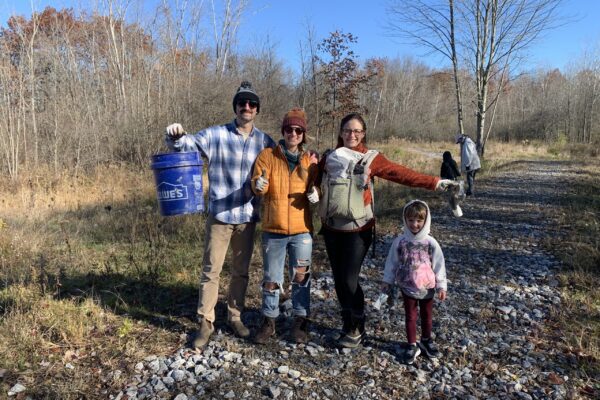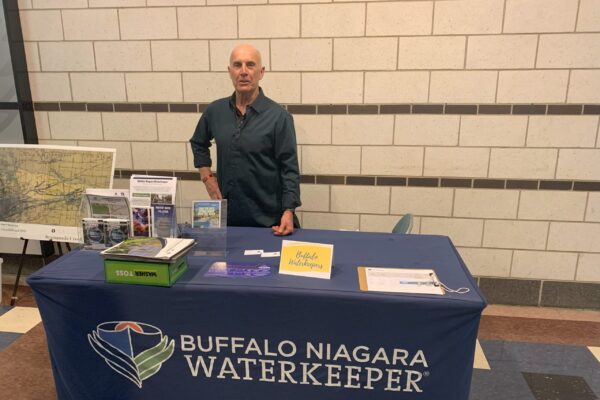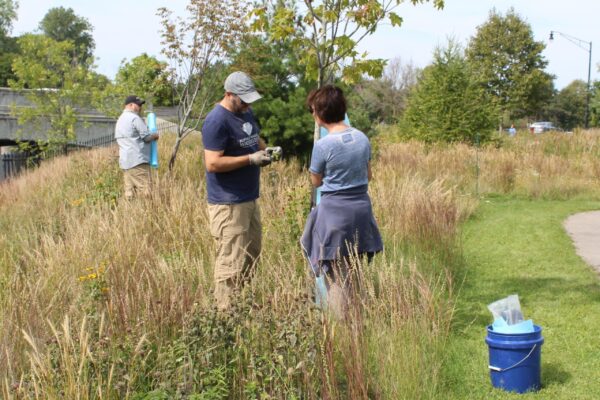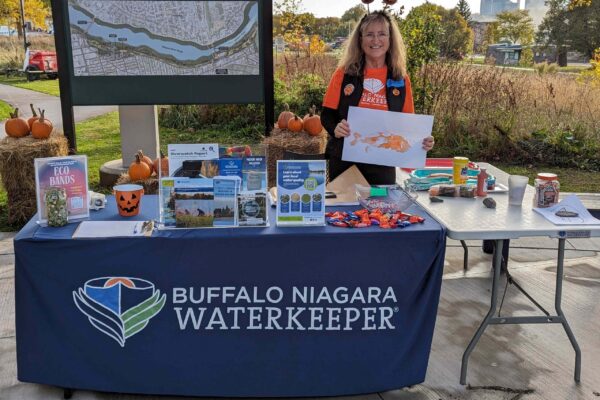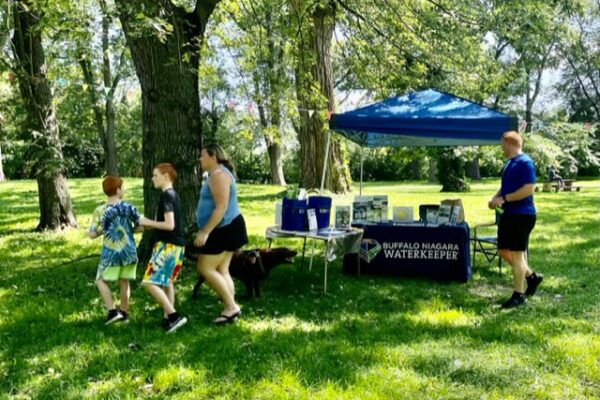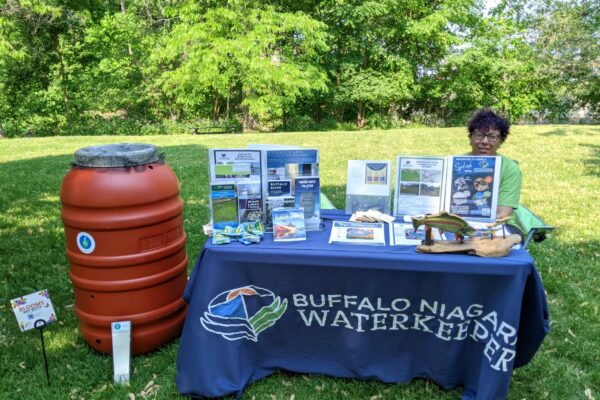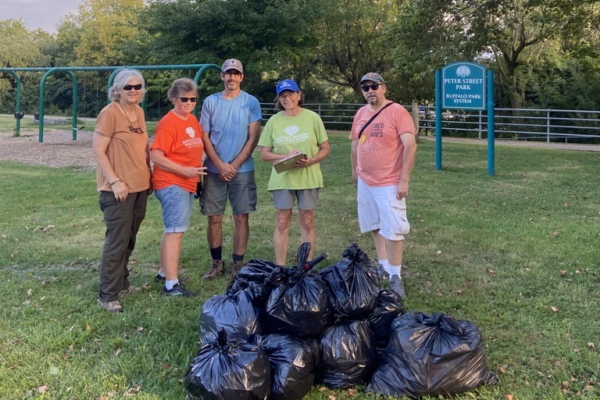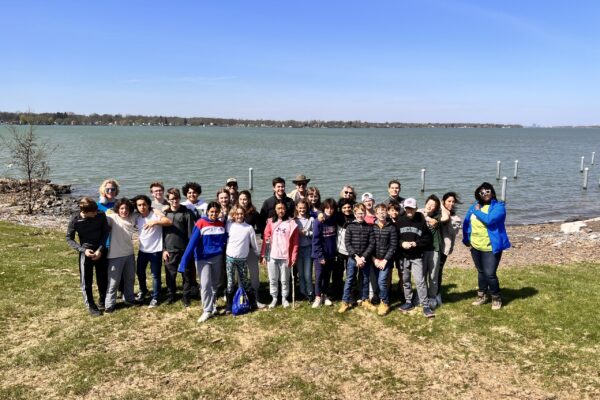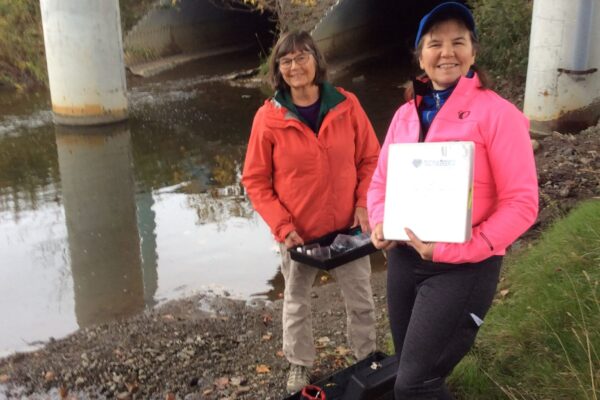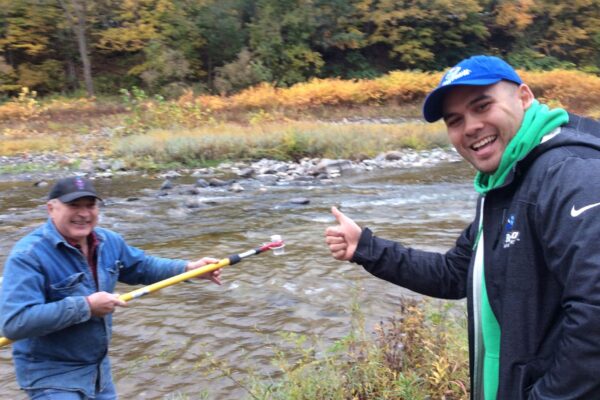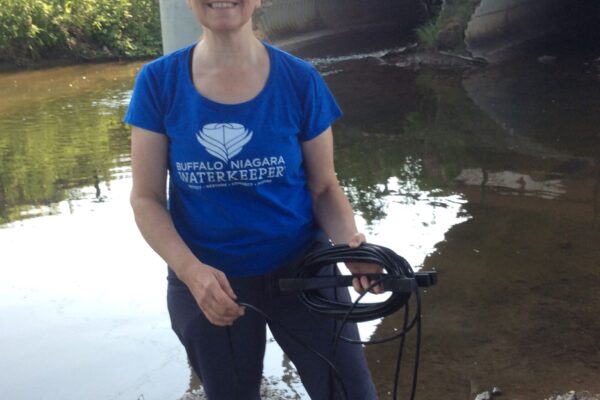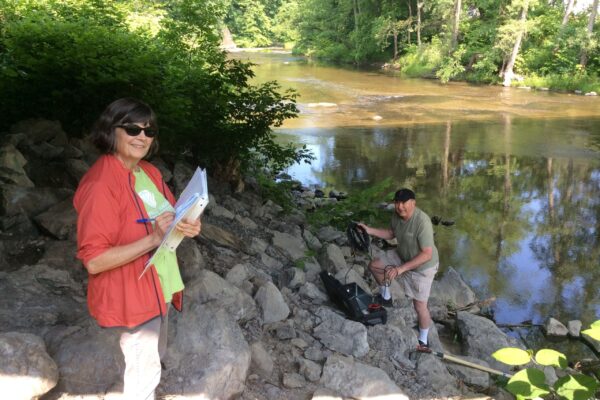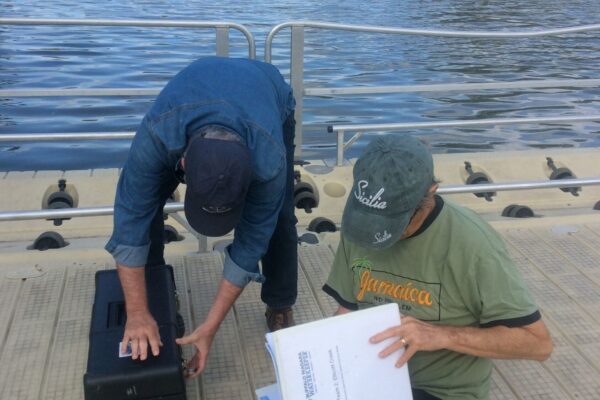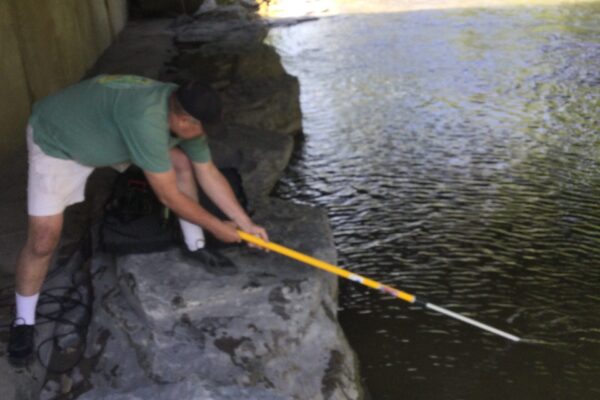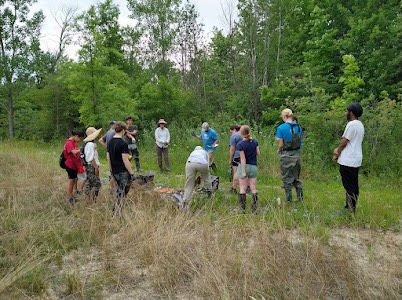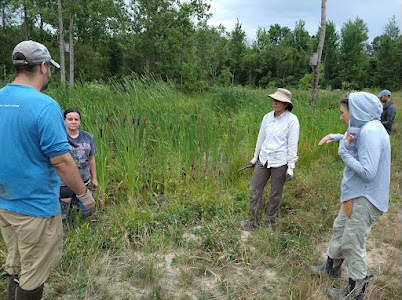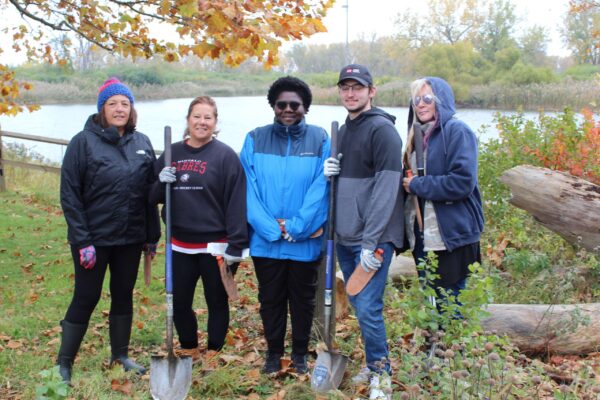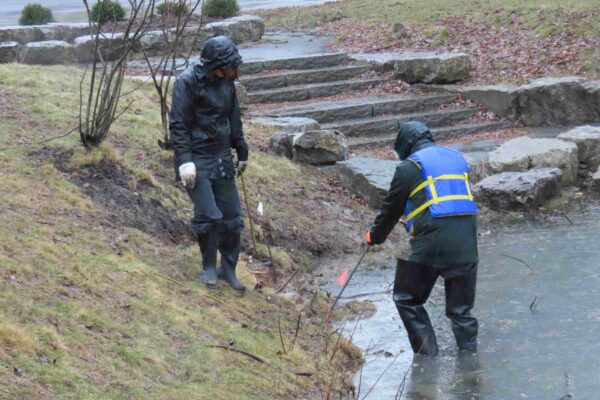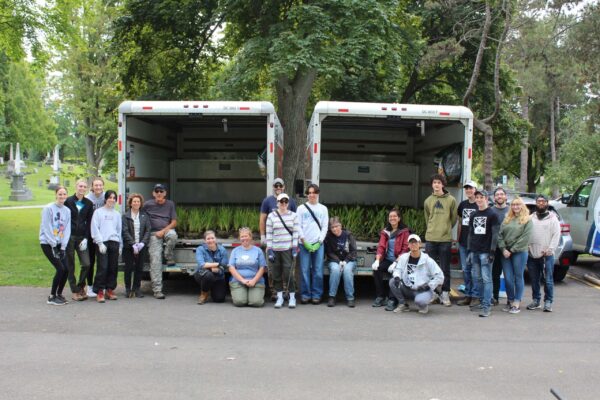Celebrating 2023 Water Wins
It was another great year protecting, preserving and gaining new access for our waterways. Buffalo Niagara Waterkeeper announced funding to restore Scajaquada Creek, saw its data used in a major lawsuit to reduce plastic pollution in the Buffalo River, expanded our Blueway sites and continued connecting with our community. Here are some of our Waterkeeper projects and programs that provided us with water wins in 2023.
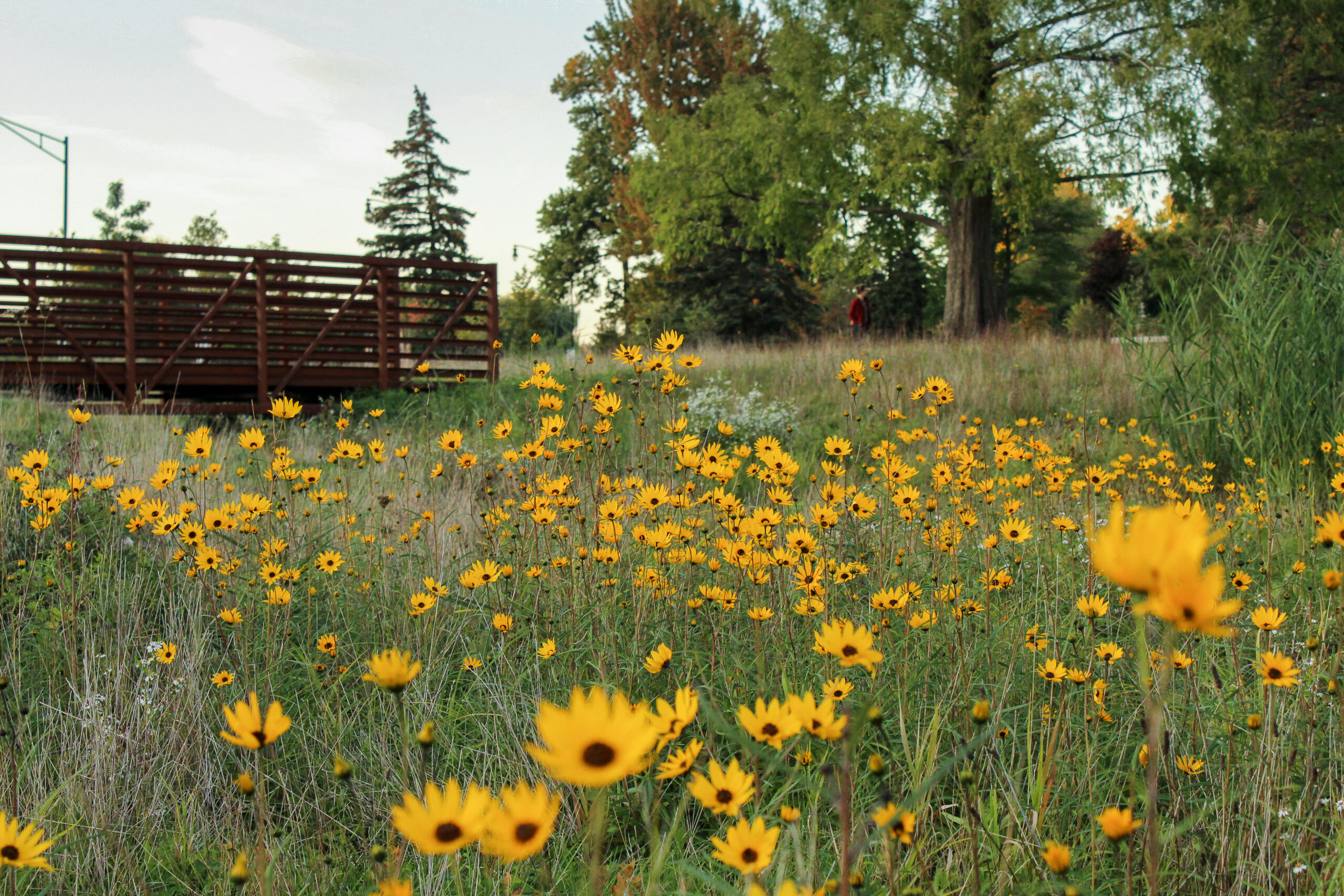
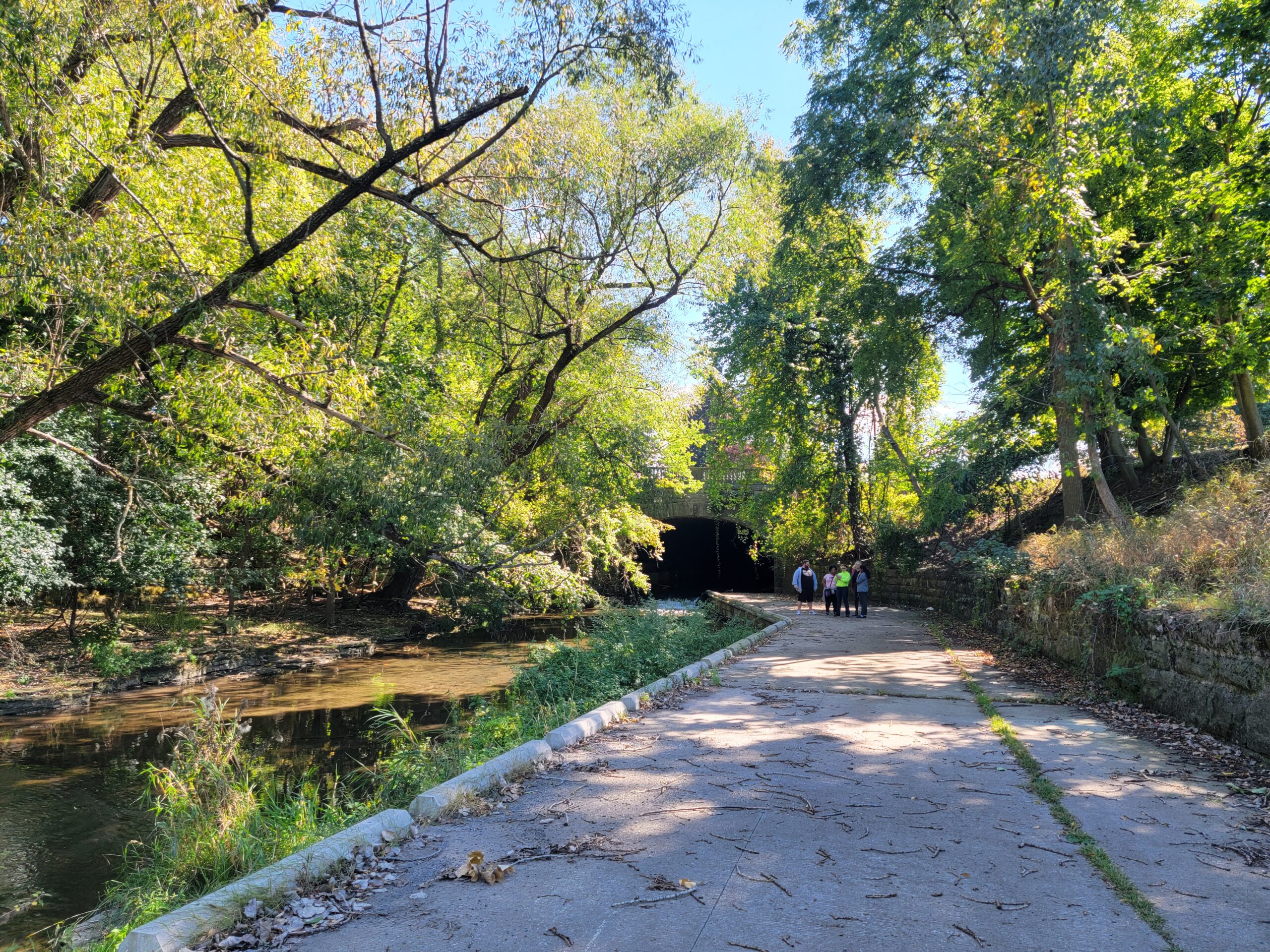
Restoration
Scajaquada Creek
revitalization sees new gains
We continue to further turn our attention to Scajaquada Creek and its revitalization.
Scajaquada Creek
In 2023, we were able to announce that we had received $900,000 from the National Oceanic and Atmospheric Administration to create a revitalization plan for the whole creek. We’ve established partnerships with local community groups and will soon form a Community Advisory Group.
This plan will serve as a resource for future decision-making by providing a technical overview of the current conditions and projects along the creek.
We also signed an important partnership with the U.S. Army Corps of Engineers Buffalo District on a feasibility study to address degraded conditions in the upper Scajaquada Creek in the Town of Cheektowaga.
Buffalo Niagara Waterkeeper secured the majority of the matching funds for the $600,000 study. The focus is on engineering solutions that would result in ecosystem improvements throughout the Scajaquada Creek watershed, such as restoring natural stream and shoreline functions, re-establishing of wetland habitat, invasive species management, and improving native plant communities.
Scajaquada Watershed Highlights
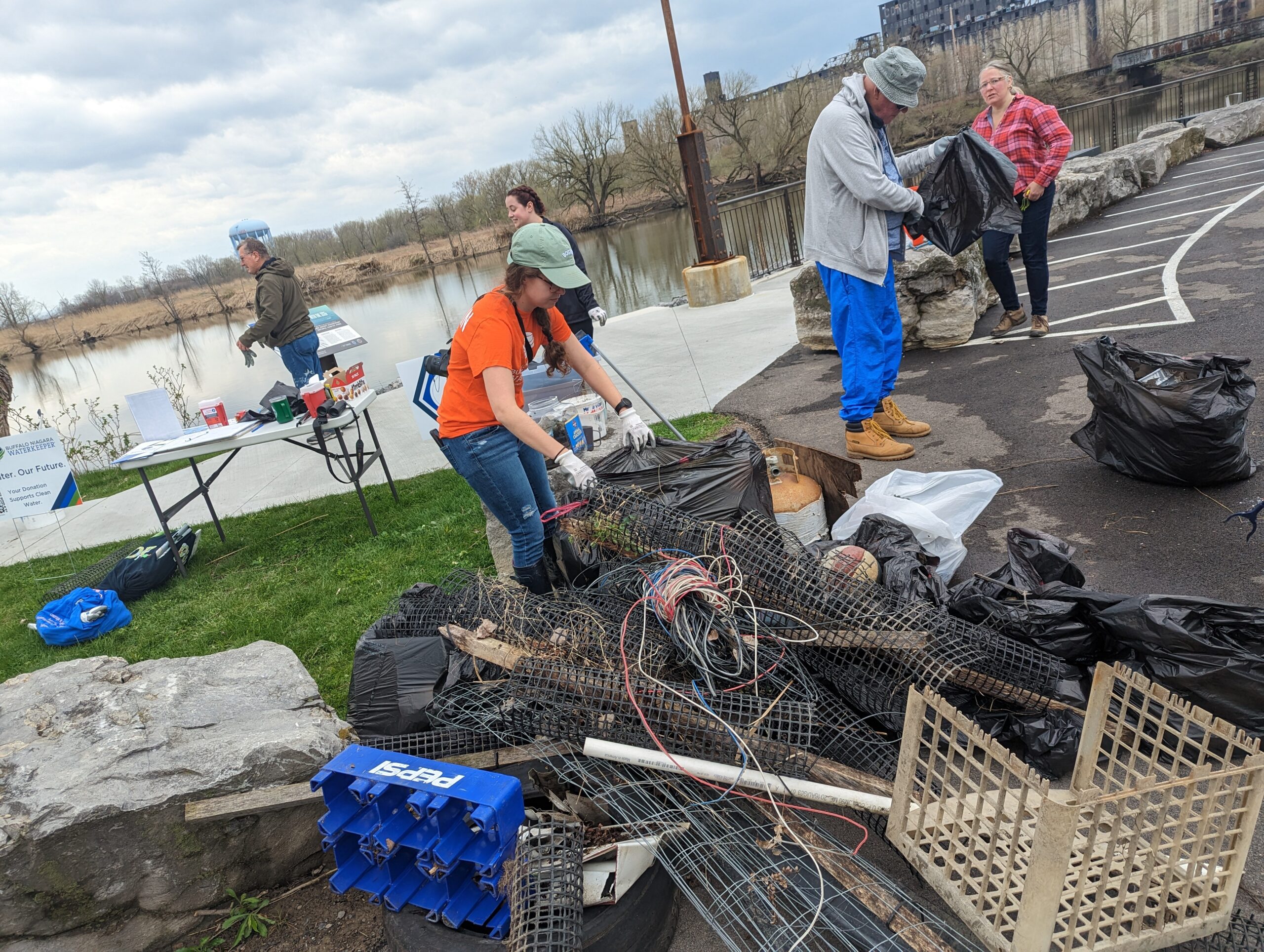
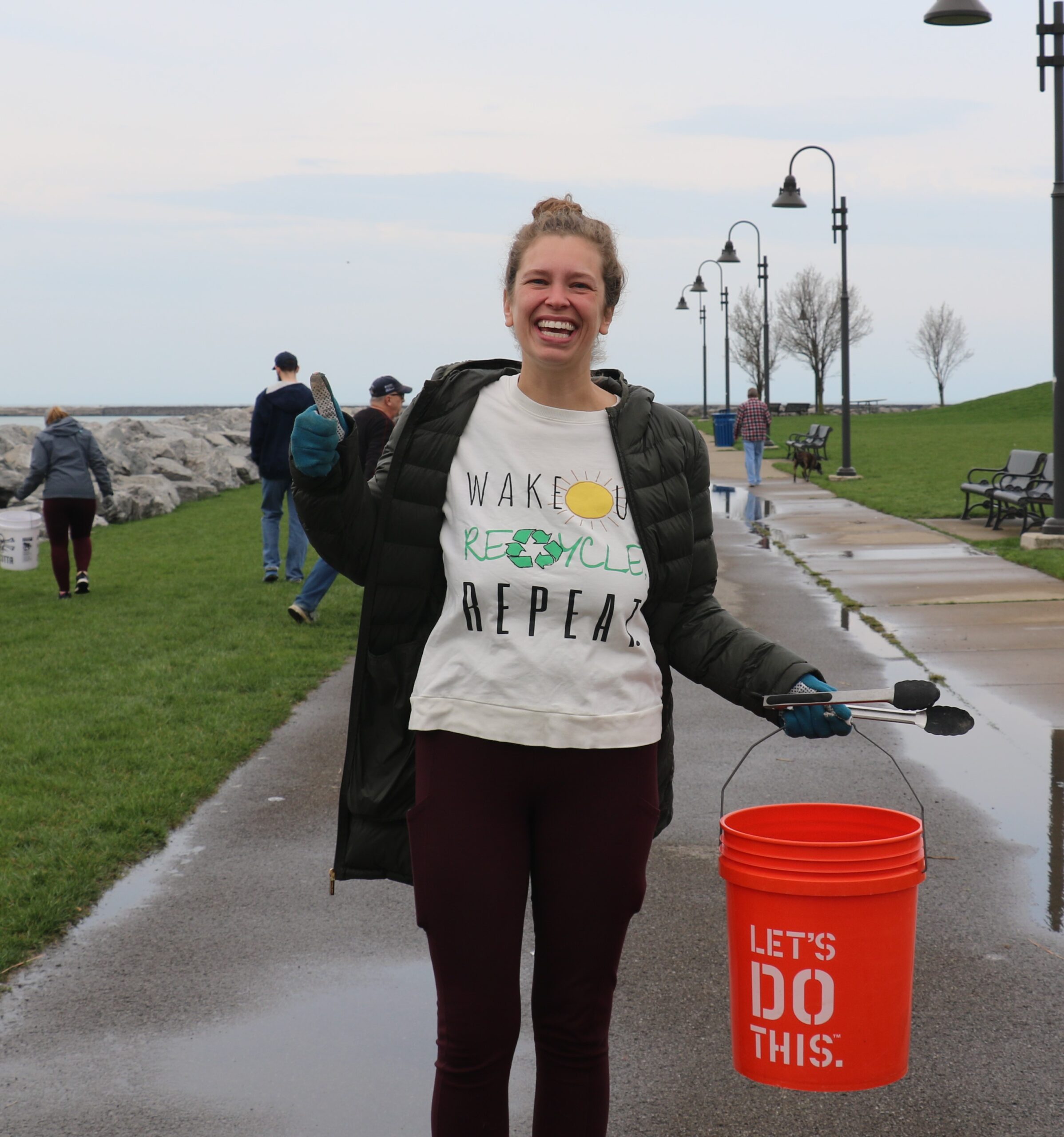
Protecting Waterways
Cleanups succeed in
ongoing litter removal
Each year thousands join us for our annual Spring Sweep to remove trash from entering our waterways and to clean our communities. And we've empowered people to practice Solo Sweeps throughout the year, enhancing our data collection and keeping trash from our waterways.
Spring Sweep Stats
Our largest annual event in April where hundreds of dedicated volunteers remove trash and collect data throughout the Niagara River Watershed.
1,350
9.5
54,000
Solo Sweep Numbers
A year-round volunteer opportunity that supports our advocacy work through litter removal & data collection.
200
50
24,000
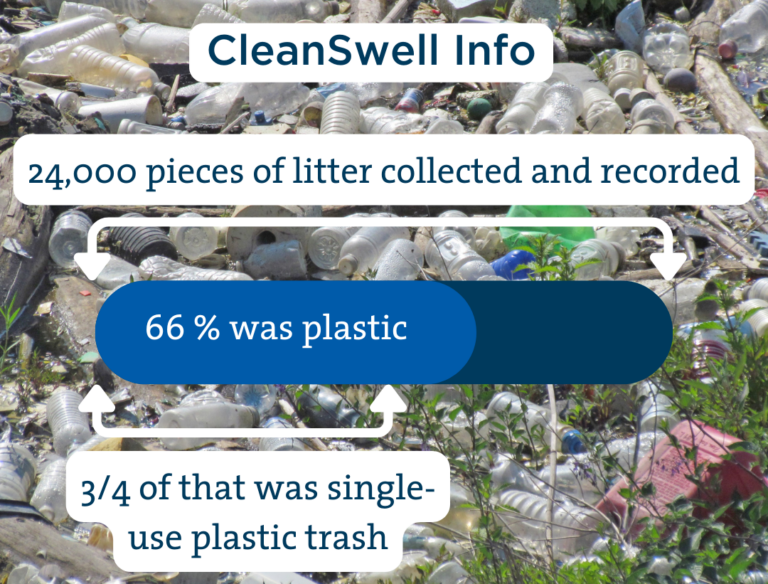
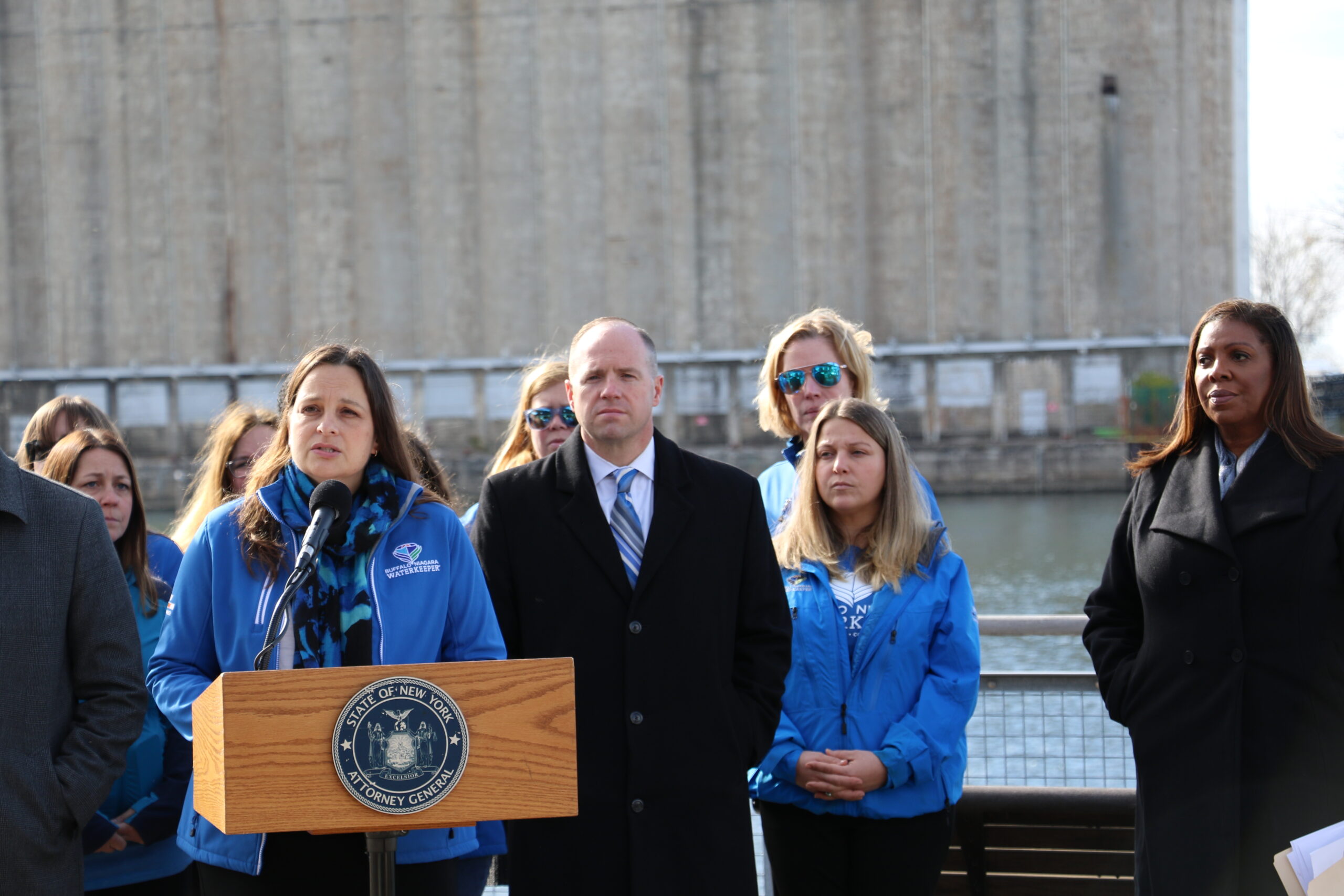
BNW Data Supports Suit Brought By NYS AG
Utilizing data collected by Buffalo Niagara Waterkeeper and its thousands of volunteers, as well as data collected from their own team, the office of New York State Attorney General Letitia James filed a lawsuit against PepsiCo, holding them accountable for their plastic products found along the Buffalo River, jeopardizing the environment and public health.
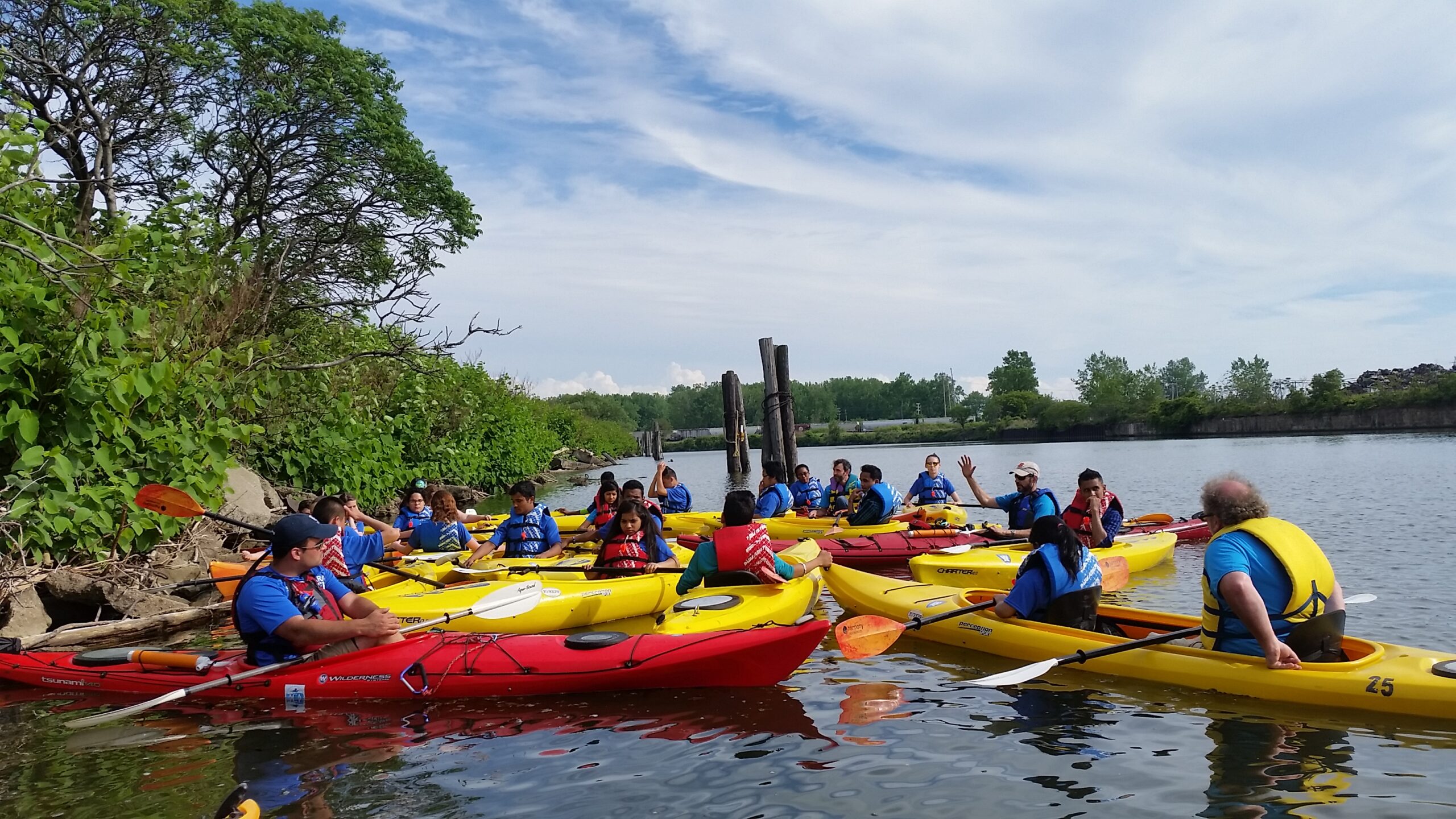

Education
YELP enriches
student education
The Young Environmental Leaders Program is an immersive education and mentoring program for high school students residing in environmental justice communities.
YELP in 2023
In 2023, we had 48 students graduate from YELP. They had a busy year. Students were taken to Woodlawn beach, toured and learned about Love Canal, found macroinvertebrates at Buffalo Creek, were given a tour at Buffalo Sewer Authority and also met up with other community partners.
At the heart of this program, we strive to cultivate environmental leaders who will inspire social change and fight for environmental justice. Students learn from local environmental experts and activists who provide career connections and showcase the impact of community action.
By sharing hands-on experiences to learn the science behind our environmental challenges as well as the impact of community action, we empower students to do something about it. We also strive to expose students to fun recreational spaces and activities.
These students are our next generation of environmental stewards. We had 11 students go on to complete the summer mentorship, where they continued their learning in environmental leadership and got amazing hands on experience at our restoration sites.
School Partners
Buffalo
Niagara Falls
Niagara-Wheatfield
College Credits
Students receive three college credits upon completing the program
Testimonial
“I really loved this program. It was like the light at the end of a tunnel. This program helped me discover what I want to study in college and the career path I want to follow, which is environmental science. This program basically changed my life and I am grateful for it.”

Buffalo News Features YELP Students!
Former YELP students met for a reunion in August, and Buffalo News columnist Sean Kirst attended to hear about their experiences and what the program meant to them. He interviewed several YELP alum and wrote about it for the Aug. 20, 2023 edition of the Buffalo News.
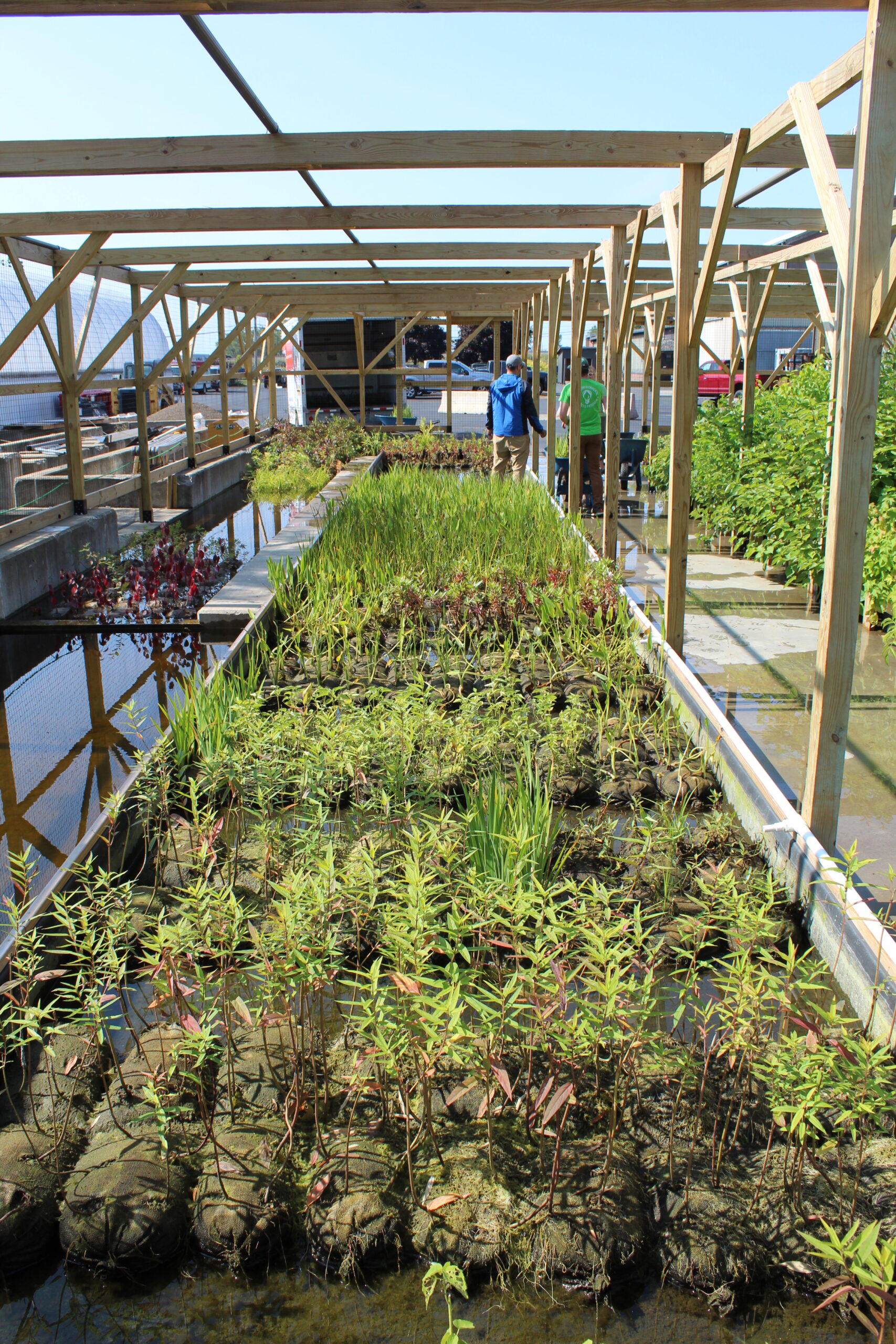
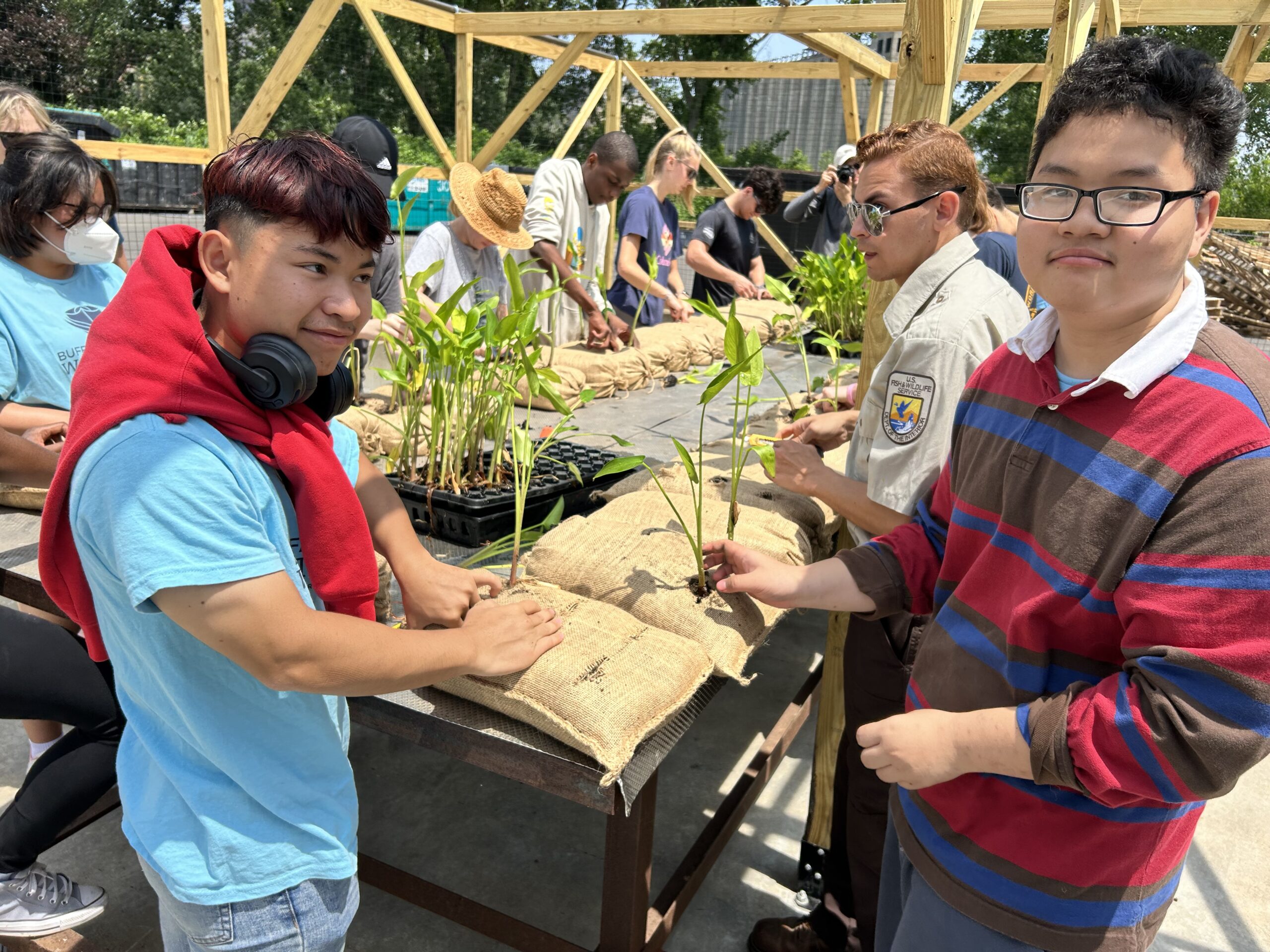
Restoration
Restoring waterways
and community outreach
Our RestoreCorp program is how we engage the community in restoration projects and teach stewardship for community.
RestoreCorps
Thousands of plants in the ground. Hundreds of volunteer hours recorded. Over 100 acres of restoration sites managed. The RestoreCorps team and the many volunteers had a great 2023.
We were able to tackle work at Forest Lawn Cemetery, Cayuga Creek in the Town of Niagara, Hyde Park and North Tonawanda Botanical Gardens. This included new plantings, removing invasive species, installing wetland habitats, removing garbage and providing education to our community.
Our adaptive management activities were carried out at six different restoration areas resulting in invasive species management, thousands of supplemental plantings, meadow reseeding, habitat box maintenance, trail maintenance, and meaningful community engagement. The program expanded the scope of services provided in 2023 to include the grow out and installation of wetland rock-socks, made possible by a new partnership between BNW and the Friends of Silo City.
In summer, we hosted our inaugural Restoration and Adaptive Management Program (RAMP). This program was made for those who wanted mentorship opportunities in ecological services and community engagement. The goal was to teach an understanding of: invasive species management, wetland plantings and trail upkeep, all while gaining experience in networking with local non-profits, enhancing resumes and gaining in-field experience.
We had three great people this summer who helped at our sites while also working alongside students in the YELP program. It was an amazing experience with a great crew. Learn more about them here.
What We’ve Done
718
115
4,500
Cayuga Creek
Buffalo Niagara Waterkeeper continued maintenance of the Cayuga Creek floodplain meadow in the Town of Niagara to keep invasive species in check as our native plants continue to grow and establish. This includes watching over 2,000 linear feet of trails within the restoration site to remove weeds encroaching on the gravel trail.
With the help of staff and volunteers, we also added eight bluebird boxes in the meadow and three additional duck boxes. There were also multiple RestoreCorps native planting events throughout the year. Check out before and after images of the area here.
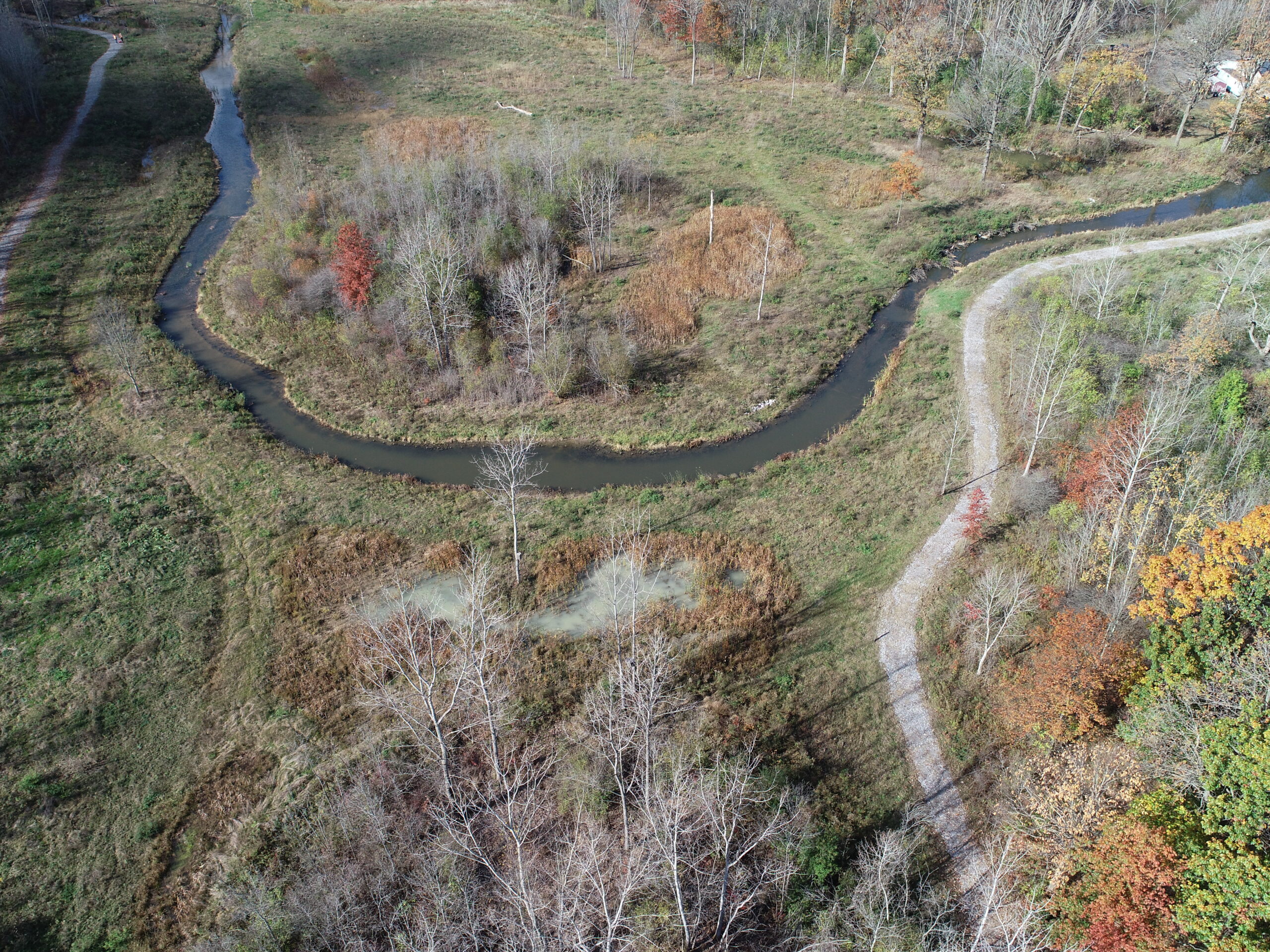
Policy & Advocacy
Buffalo Niagara Waterkeeper’s advocacy work cuts across all of our core values to deliver beneficial policies, processes, and projects to ensure clean water for all of Western New York.
Our Advocacy:
Continue advocating for reduced plastic pollution in local waterways, including connecting with NYS Senate leaders and gathering 750 signatures on a petition advocating for producer responsibility for plastic waste.
Met with 14 municipalities to discuss on-the-ground projects to bolster coastal and climate resiliency and further the goals of the Great Lakes Action Agenda.
Continue participating in various statewide coalitions regarding the Climate Leadership and Community Protection Act and the Environmental Bond Act
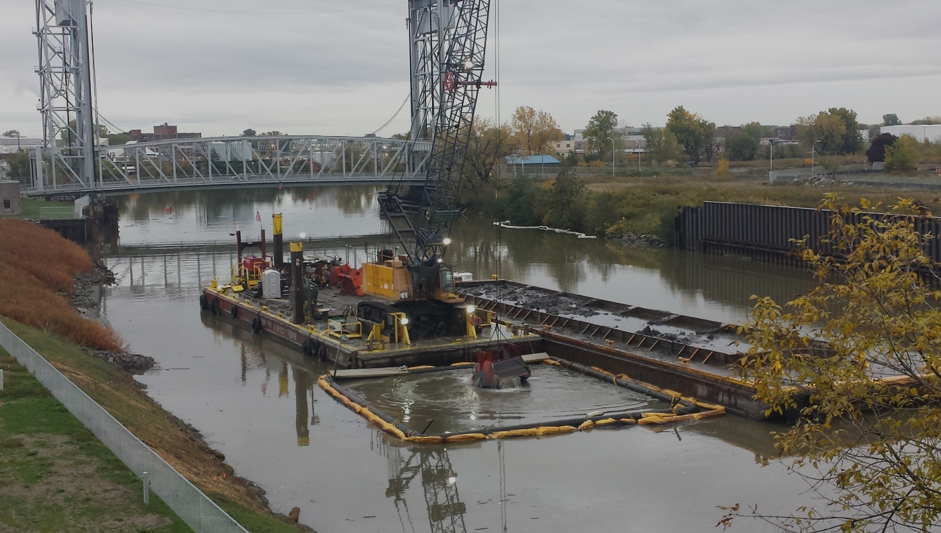
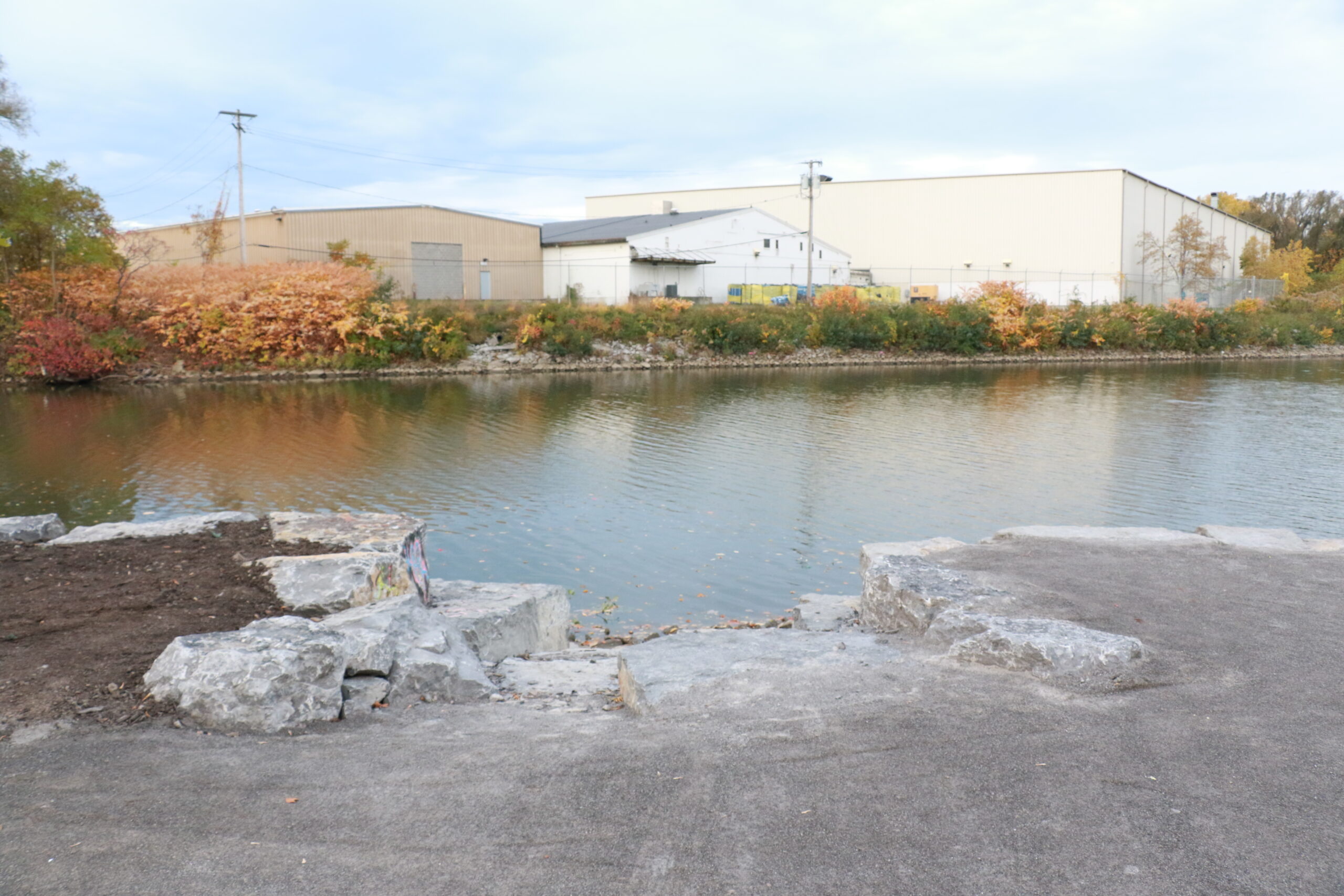
Access For All
Buffalo River
restoration and Blueway access
This year we were able to remove two impairment listings on the Buffalo River, while adding and enhancing our access sites along the Blueway.
Buffalo River
The Buffalo River is part of an Area Of Concern and that designation means there are impairments that must be removed in order to take the river off the concern listing. Buffalo Niagara Waterkeeper has coordinated the work to remove these impairments. In 2023, two more of these Beneficial Use Impairments were removed by the EPA.
So far, five of the nine impairments have been removed and we are looking to have the others gone by 2026.
The Degradation of Benthos Beneficial Use Impairment removal was achieved through extensive sediment remediation work, which reduced sediment toxicity to levels that are no longer harmful to benthic organisms in the river.
The Fish and Wildlife Habitat impairment removal meant creating and reestablishing habitat with the physical, chemical, and biological characteristics necessary to support native fish and wildlife populations. Restoration actions can include removing stream barriers, enhancing shoreline complexity, removing invasive species, or restoring wetlands.
Blueway
There are now six Buffalo Blueway access sites along the Buffalo River. At the end of 2023, we were able to add Thomas F. Higgins Riverfront Park to the list after making extensive renovations.
This park, next to the Bailey Avenue bridge, had its shoreline damaged over the years due to ice jam flow along both the Buffalo River and Cazenovia Creek. After years of design work, Buffalo Niagara Waterkeeper, Erie County and contractors were able to enhance the park.
Wrapping the shoreline now are rocks to protect it from yearly erosion and eventual loss of the park. There is a space along the wall to allow people in kayaks or canoes the ability to exit the waterway if they need a break while on the water.
The enhancements improve visibility while new benches were added for visitors and a new fishing pier overlooking the Buffalo River was constructed. A Blueway marker stands at the pier to let people know they are at a Blueway site.
Two additional sites are in the final design process, with construction at Seneca Bluffs and Harlem Road Fishing Access expected in 2024. Learn about other Blueway sites here.
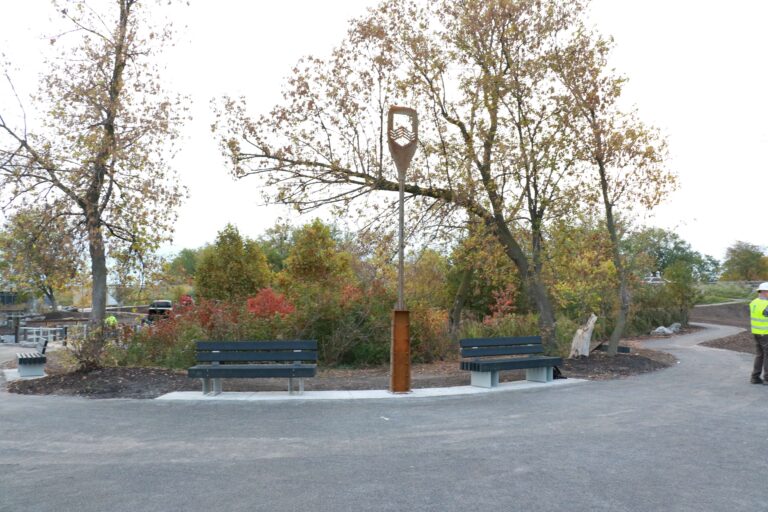
Here is the remodeled point of Thomas F. Higgins Park, with benches and a Blueway marker.
Red Jacket Mural
There’s a new mural at Red Jacket Riverfront Park, another one of our Blueway sites. The entrance bridge to the park had previously been disconnected and what remains are the abutments. That became the canvas for the mural. After putting out a call for artists, we picked Emma Brittain to paint the mural. She started in the summer and finished at the end of August.
“It’s a testament to all the work people are doing, whether it’s Waterkeeper or other organizations, to revitalize our waterways and take care of what we have here,” Brittain said. “I want to title this ‘Hopeful Currents.’ I think of hope when I see the otters. We hear a lot of doom and gloom about the environment, but there are so many things we can be doing and sill appreciating all that is happening in our waterways.”
This project was made possible with funds from the Expanding Access to Arts Funding in WNY, a regrant program of the New York State Council on the Arts with the support of the Office of the Governor and the New York State Legislature and administered by the Cullen Foundation. See the mural unveiling.
Below is an image comparison of how the wall looked before and after the Red Jacket park mural.
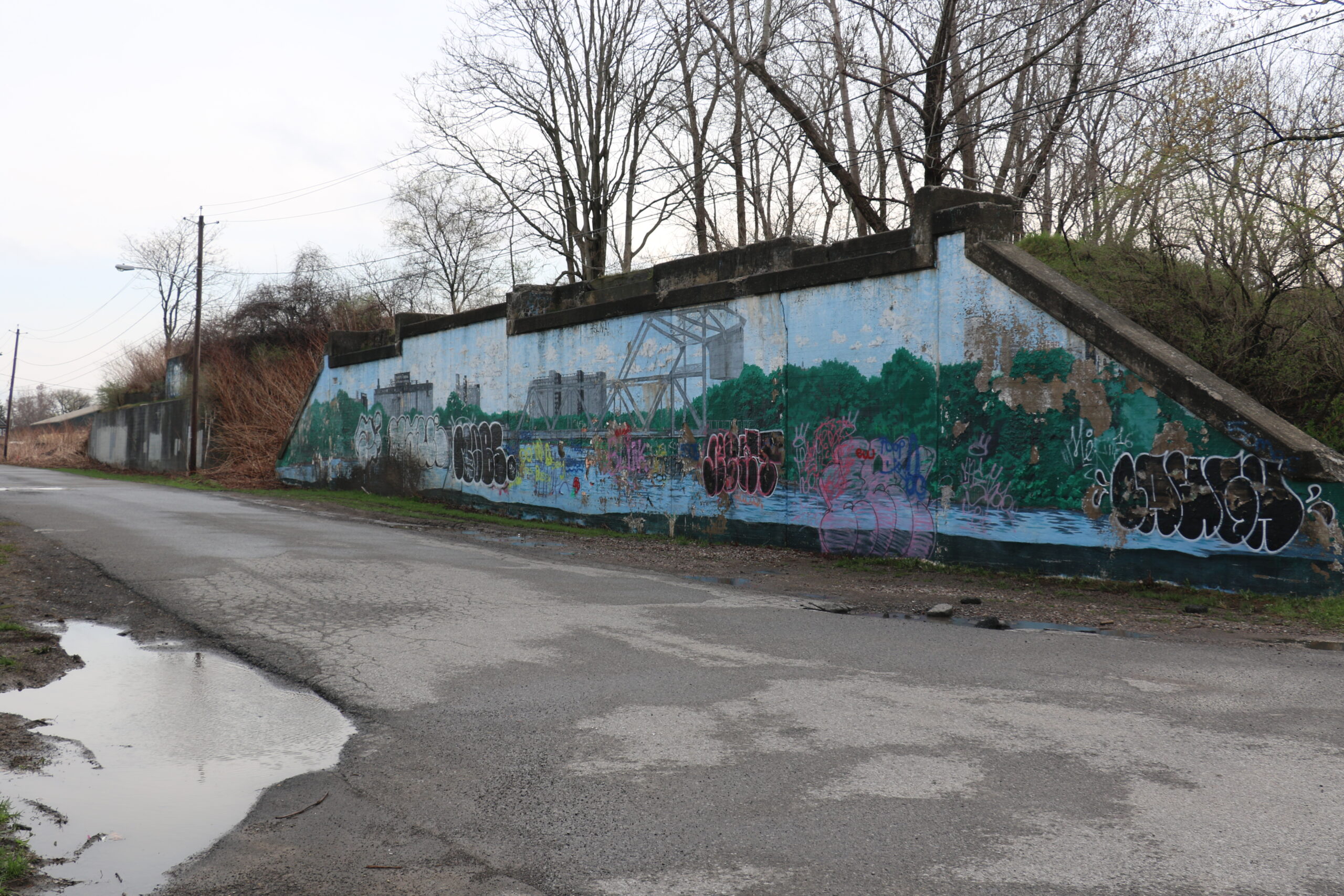
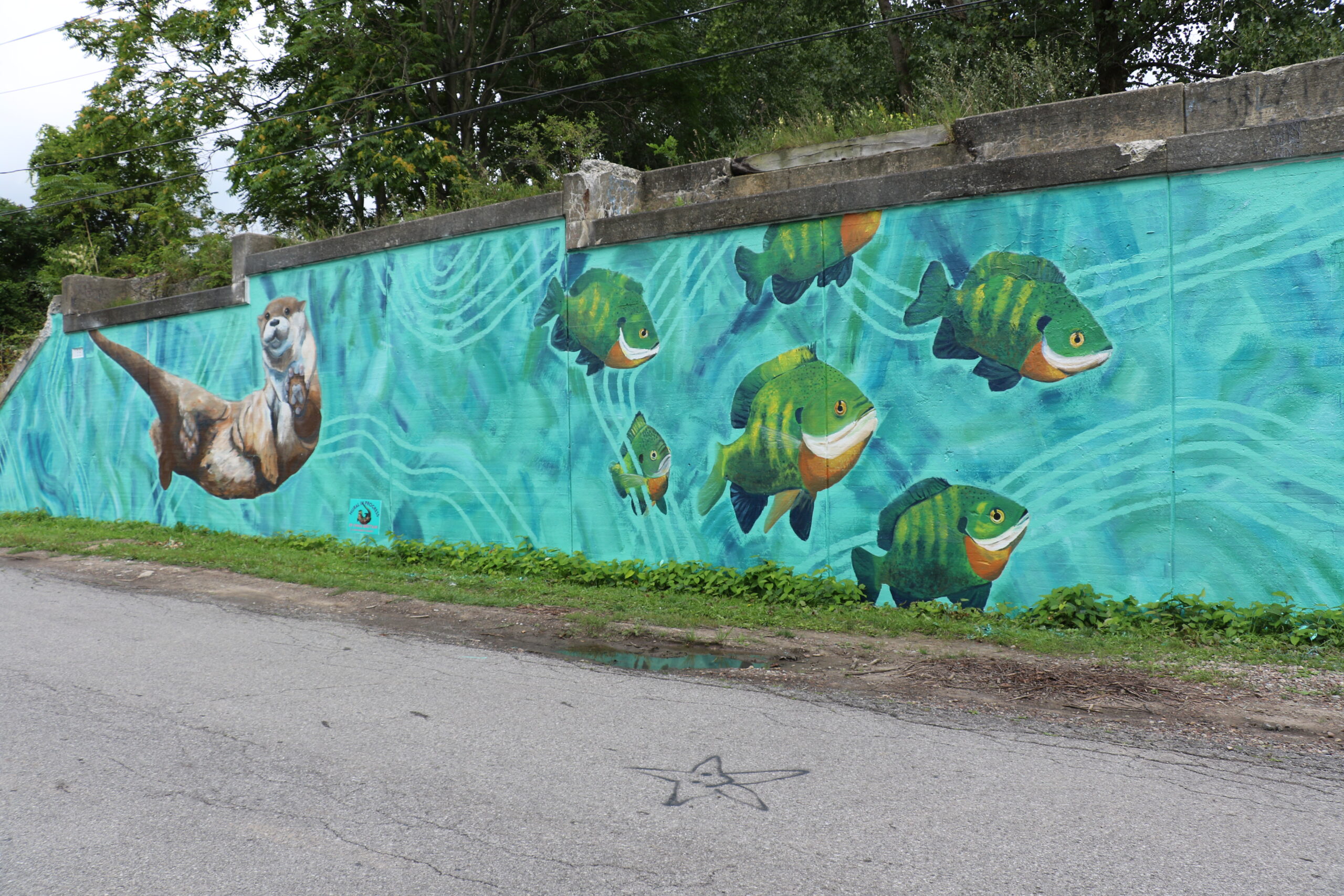

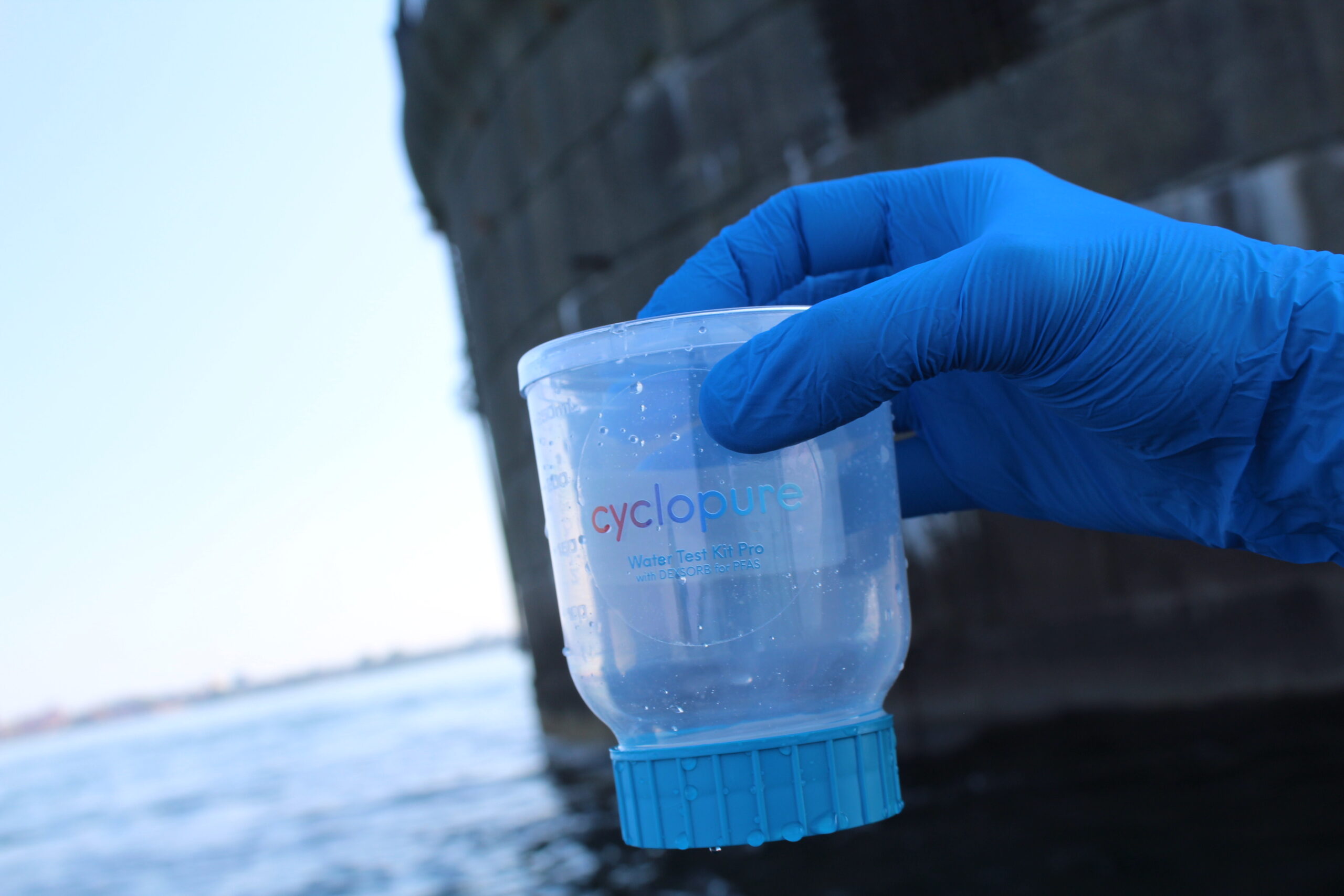
Protecting Waterways
Water quality
sampling and data collection
Water testing continued by both staff and volunteers to continue understanding where our services are needed.
Water Testing
During the testing season, normally from May to end of October, we had 471 baseline water chemistry samples recorded by both staff and volunteers. Knowing what’s in our water guides our advocacy and stewardship while informing policy makers of the issues.
We had 78 individual monitoring locations throughout our watershed. During the collection season, we collected 165 samples for E. coli testing – 69 of the tests were failures, meaning E. coli levels in the water came back higher than what is safe. See results on this page.
We continued our PFAS surface water testing throughout our Watershed, with 21 additional tests completed this year. These results help to ID potentially contaminated areas in our region. Learn more about PFAS here.
Harmful Algal Blooms
This year marked the longest reporting season on record for Buffalo Niagara Waterkeeper in testing for Harmful Algal Blooms (HABs). Reporting started in early May and lasted until the end of October.
During that time, we had 30 reports and 27 confirmed HABs. Each report was sent to the Department of Environmental Conservation (DEC). We also expanded our connections with local experts at universities and Erie County labs. Daemen College even hosted a class on HABs for our mentorship students.
We also started the Ellicott Creek Euglena Technical Advisory Committee and the DEC expanded its definition of HABs to include Euglena, a specific type of HAB. The goal of all this work was to inform community members about potential dangers associated with HABs in their waterways. This summer we reached over 20,000 people in our outreach efforts. Learn more about HABs here.
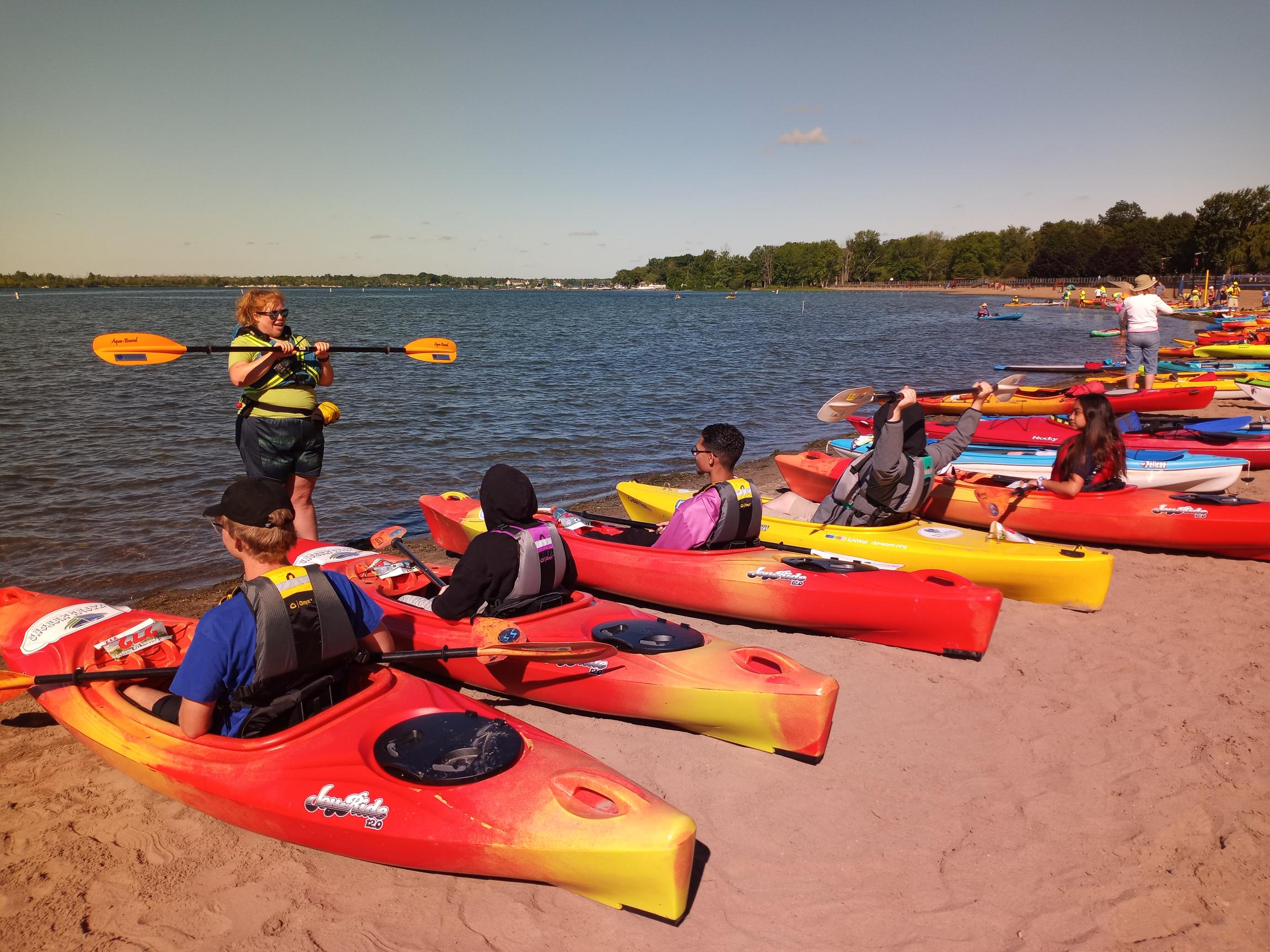

Protecting Waterways
Restorations, plantings,
community engagement and more
Water Wins continue, from outreach endeavors to monitoring harmful algal blooms in our waterways.
Other News
Coastal Resiliency
Hyde Park
Grant Writing
Partnerships
Bark Park Construction
Eighteenmile Creek
Headwaters Protection
Lancaster Infrastructure
Kayak Tours


Community Outreach
Advocating for
BNW
Our outreach efforts and projects have such an impact because of our dedicated volunteers across the region.
Dedicated Volunteers
A great water win was being able to engage with so many volunteers from around the community. Every year, hundreds step up to help with plantings, cleanups and citizen science efforts. Every year a dedicated group of Volunteer Ambassadors attend events to share Buffalo Niagara Waterkeeper’s message. And we are able to count on nearly 2,000 people to help in our annual Spring Sweep.
In our Riverwatch citizen science program, there were 29 volunteers who monitored 57 sites throughout the Niagara River Watershed in 2023. They were able to collect additional data on our behalf.
There were 273 people who helped at RestoreCorps events and volunteered a cumulative of 700 hours. They supported our restoration maintenance efforts.
Over a hundred held a Solo Sweep and recorded the trash data so we could use that for our advocacy work.
This list of Water Wins for 2023 is quite the accomplishment, and we’re looking forward to 2024 and building on our past success. This success is built with the support of the many who support, volunteer and donate each year to fulfill our mission of clean water for all.



